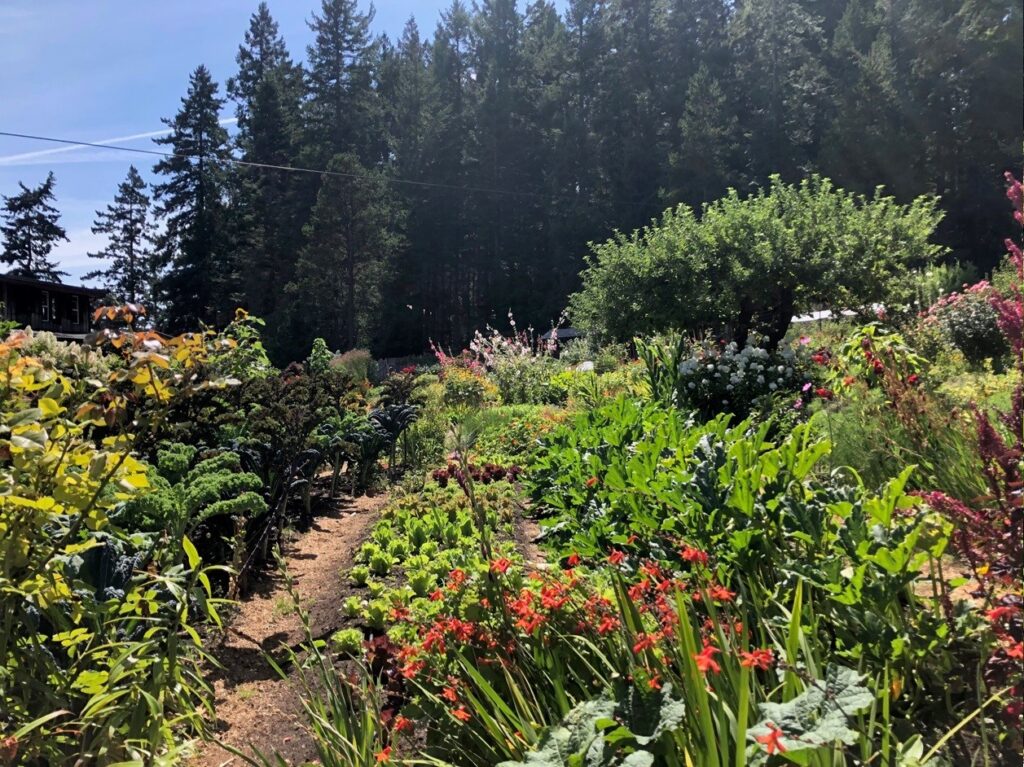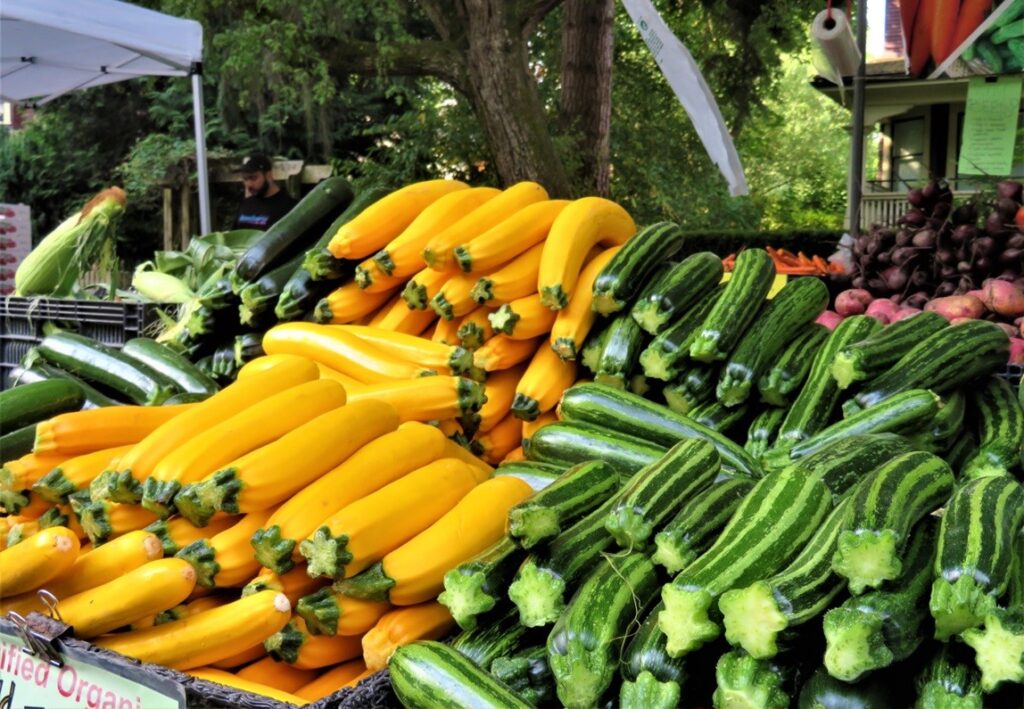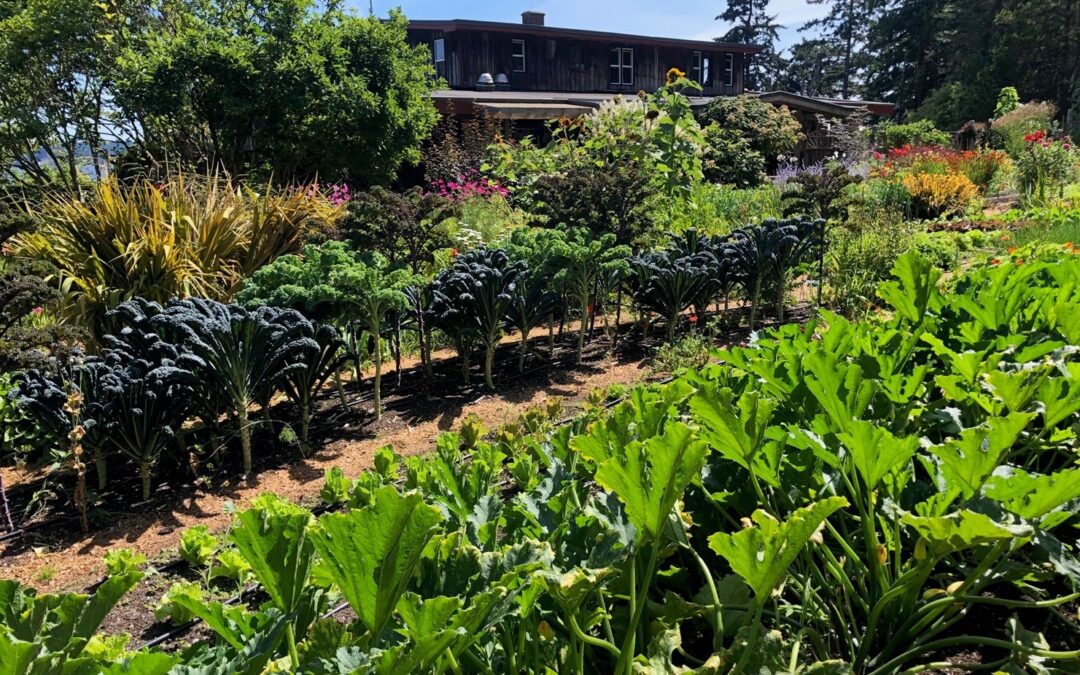Listen to the author reading this article (16:03)
In 1926, 90% of the vegetables consumed in Vancouver came from the Chinese market gardens growing along the Fraser River.’ –
Cumberland Museum
June 10, 2023 – June, 2024
“On the one hand, there is the work of offering palliative care to assist with what is dying (i.e., hospicing). On the other hand, there is the work of assisting with the birth of something new, without suffocating it with projections (i.e., assisting with midwifery.)
Hospicing Modernity
I was sitting at the Grind this afternoon, my go to spot for coffee here in Cumberland, where I endured an unsought overhearing of one of those cell-phone conversations that I would prefer to forget. Complaining about the need to nap after his workout, the ball-capped speaker then regaled his listener about the effing idiocy of those who feel the Bible is boring. For therein he proclaimed was information (among other things) about the coming hordes of giants and demonic aliens – be very afraid! He’s right about that, as was Strider speaking to Frodo! But it’s the poly-crisis that’s got me worried, and it’s not something in the future, near or distant. As Michael Lerner writes in the LAProgressive, the poly-crisis is something new, a “a confluence of environmental, social, technological, financial-economic, natural and other forces are interacting with ever increasing unpredictability, rapidity and power. We believe these unpredictable interactions are causing future shocks of ever greater frequency and amplitude”. Lerner describes three ways that the poly-crisis is currently being mapped, from the perspective of world-view (orientations like techno-optimism, neo-Marxism, critiques of colonialism and imperialism, religious or spiritual understandings, etc.), systems analysis (attempts to be analytically neutral, e.g., Davos’ Global Risk Report, Raworth’s donut economics, Cascade Institute, or the 1972 Limits to Growth report), or narrative (e.g. Kim Stanley Robertson’s Ministry for the Future. (I currently continue to navigate with one version of the first set, specifically that found in Vanessa Machado de Oliveira Hospicing Modernity). My immediate response to each of these maps is to fight, fly, or freeze!
Those of you who have been with GTEC for a while will likely know that I am pretty clear that we are facing near term collapse of the many interlocking systems that comprise Modernity (what some folk refer to as “the Machine”). As this summer lurches to a close, the signs seem pretty obvious: the hottest summer in 125,000 years, ocean temperatures over 100 degrees F, stationary heat domes over parts of the U.S., wildfires and floods around the Mediterranean. The list goes on. And I haven’t even started to list the bombshells of the political sphere, or the financial!
It’s hard, isn’t it, to find a balance? To hold this moment of collapse in awareness, to not sink into the sofa of ignorance and denial, to be with Modernity as it dies, to sit as witness to the good, the bad, and the ugly as the pain and suffering of its demise spreads and intensifies! In Hospicing Modernity, Vanessa describes the four “constitutive” denials[1] that restrict our capacity to sense, relate, and imagine our current reality and its alternatives: 1) the denial of systemic, historic and ongoing violence; 2) the denial of the limits of the planet; 3) the denial of our entanglement with each other and the land (which results in our experience of separation and isolation); and the denial of the magnitude of the depth and complexity of the problem (which leads us to seek simplistic solutions). Constrained by these denials, unable to recognizing and acknowledge our common (and wicked) predicament, it becomes an almost insurmountable challenge to engage with the practice of midwifery. How can we continue to hope, to imagine and to begin the work of birthing a more just and beautiful world?
Having embraced the notion that the end of the world as we know it is not necessarily the end of the world per se, and that there is value in imagining our current role of midwifery into something worth living for, I am heartened by Chris Smaje’s recent “Small Farm Futures”, the subtitle of which is virtually a manifesto in itself: “making the case for a society built around local economies, self-provisioning agricultural diversity and a shared earth”. I despair of finding a simple response to what we are up against, but Smaje makes a compelling case for grounding a viable future in our capacity as humans to cooperate with our landscapes to provide the necessities of life, namely food, shelter, and water, and to do it in a way that is just and equitable.

I am reminded of the old Wobbly maxim, “building the new society in the shell of the old”. Even as signs of the Collapse multiply, there are things we can do. For example, most of us can grow at least something to lessen our dependency on the supply chains that currently sustain us! To be perfectly honest, I am not a farmer. Not even much of a gardener, though I am hoping for a few more potatoes than last year, as long as someone waters them when we’re away from home. (My relationship to growing things has been more semantic than somatic, enquiring into the various and diverse meanings of “soil”, “earth”, and “dirt”, as opposed to sinking my fingers into them). But over the years, I have made some efforts and have had some success with the small gardens, both flower and veggie, that we have grown. The encouragement I find in these minimal successes in these endeavours opens my mind and heart to the content and passion of Smaje’s book. Visions for and of the future should be held lightly, if at all, but I am very grateful for his contribution to a flavour of the possible, the sense that a hoped-for culture could arise from the ashes of the present.
He begins with a review of the “poly-crisis” described previously in Lerner’s blog. This section may be a challenge for some readers unfamiliar with current research in the fields of social science, economics, and agriculture as it takes a deep dive into the statistics emerging in these various fields. Taken together, the ten crises explored (population, climate, energy, soil, stuff, water, land, health and nutrition, political economy, and culture) constitute a clear and specific picture of what we are “up against”. However, Smaje’s reading of this confluence is not entirely negative: “these sobering implications are potentially liberating because they suggest that the present structuring of the global economy can’t continue, freeing us to work towards other kinds of economy. This is the lodestar of an emerging movement in economics working under the banner of ‘degrowth’ that aims to rethink the whole basis of economic action. [2]
Like others (e.g., Dougald Hine in At Work In The Ruins), while vitally concerned with the “existential threat” of the climate emergency, Smaje provides a more comprehensive critique of our situation and proposes a set of possibilities that might guide us, individually and collectively, through this moment. A future organized around “a small-farm, agrarian populism inherited from the first populist movement in ways fit for present times that enable people to provision themselves collectively”. [3]
Smaje guides us through the current alternatives to industrial agriculture -biointensification, biomimicry, organics, regenerative agriculture, and permaculture – settling on the latter as the most promising, emphasizing design solutions that are specific to each occasion. He suggests that the emphasis on “the labour-intensive personal production of the homesteader” allies most closely with the small farm future he envisions, embodying four broad and essential themes: bio-intensification, bio-mimicry, inevitable trade-offs, and a significantly larger proportion of rural farmers than exists today. His vision, in many ways, echoes the prescience of E. F. Schumacher writing in 1973, people “organized in small units will take better care of their bit of land or other natural resources than anonymous companies or megalomanic governments”.[4]

I greatly admire Smaje’s integrity in eschewing large-scale, universal prescriptions. Throughout the book he cautions us, through example and argument, of the importance of the Local, that each jurisdiction, each community and neighbourhood must discover its own way forward. Significant diversity exists in a range of critical factors around the globe in terms of climate, soil, water, financial structures, infrastructure, political economy and culture.
For example, the single factor of land usage here in British Columbia differs radically from that in Smaje’s England as well as elsewhere here on Turtle Island. (Proponents of bioregionalism may find both confirmation and inspiration in his analysis). There are approximately 5.4 million people in B.C., sharing 4.6 million hectares of land designated as agricultural (within the Agricultural Land Reserve). In the United Kingdom, there are approximately 68 million, sharing between 18 and 19 million hectares. In British Columbia, 5% of our land base is deemed agricultural compared to an equivalent of around 72% of the UK! Interestingly, the number of farms in B.C. had decreased from 21,835 in the 1996 Census to 17,528 in 2016. (The number of family farms had decreased from 21,835 family farms and 573 corporate farms to 17,161 and 367 respectively). Currently, it is extremely hard for small farmers on Vancouver Island to make a living, given problems of scale and food costs. (We recently bought a locally produced cauliflower for $18.00!!)
Translating the vision of a small farm future to British Columbia does seem very challenging but Smaje’s approach to envisioning how things could look in Britain by 2050 (in Chapter 11) is very helpful in kick starting a practical approach. There, he maps a very conservative model that accounts for significant population increase due to an influx of climate refugees, climate change, energy descent, water stress, economic crisis, and human conflict on the global stage. Assuming population changes (due to climate migration), low crop yields, and optimal nutritional resources, with eight types of farmer, food producer, or land user, he still makes the case that Britain can become food self-sufficient by 2050. A similar modelling for this locale is beyond my capacity but his work suggests to me that a shift from reliance on our current global system would be possible.
A clear fault line within this system is visible in the ongoing protests in Europe (particularly in the Netherlands) against government policies intended to minimize the climate effects of industrial scale farming (specifically regarding methane and nitrogen cycles from livestock.) This so-called war against farms and farmers has become fodder for right wing forces and conspiracy theorists pushing back against state efforts to reduce emissions on behalf of a livable planet! In a recent blog Smaje notes, “Regarding climate, the issue of ruminant methane emissions sucks the air out of more important questions, such as transitioning to low-energy agrarian localism…If governments were equal to present challenges they’d declare a proper climate emergency and start taking radical and immediate action to bring down atmospheric greenhouse gas levels…The ruminant climate narrative basically gives the appearance of trying to do something, while achieving nothing of importance, and not upsetting anyone of importance. This is an all people, all sectors, all at the same time thing, or it’s nothing”.
Fundamentally, A Small Farm Future is an attempt “to help in the work of constructing local forms of community in the context of our new dark ages”. This vision of a system organized around “agro-ecological farming and the consumption of a diverse range of fresh and minimally processed whole foods…(promoting) biodiversity and the capacity to produce enough healthy food for a growing population on a lower land footprint than today with massive climate benefits.” As such I highly recommend it, as well as Chris Smaje’s excellent website (https://chrissmaje.com/blog/) where his regular blog posts cover the most significant issues facing food and agriculture today!
[1] Machado de Oliveira, Vanessa (2021) Hospicing Modernity. 22-23
[2] Smaje, Chris (2020) A Small Farm Futures, 33
[3] Smaje, p. 267
[4] Schumacher, E.F. (1973) Small is Beautiful: Economics as if people mattered.
 Scott Lawrance, Ed.D., R.C.C.
Scott Lawrance, Ed.D., R.C.C.
A retired member of the B.C. Teacher’s Federation, Scott has taught at all levels of public education from grade two to post-Secondary. His current professional interests include Buddhist approaches to eco-therapy. Scott and his Salish Sea Eco-retreats partner, Tara Souch offer annual eco-retreats for wilderness guides and interested professionals. He is the author of four books of poetry and has, in the past, edited two poetry magazines, “Raven” and “Circular Causation”.


